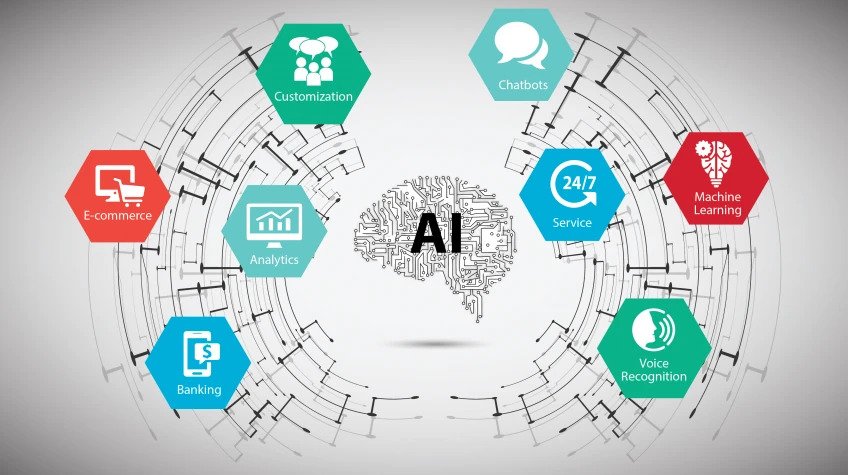In today’s fast-paced business world, understanding your customers is more important than ever. Companies that can accurately predict customer behavior and preferences have a significant advantage over their competitors. This is where predictive AI analytics comes into play. By leveraging advanced algorithms and machine learning, businesses can gain deep insights into customer behavior, helping them to tailor their marketing efforts, improve customer satisfaction, and drive growth. In this article, we will explore how predictive AI analytics can transform your understanding of customers and provide actionable strategies to enhance your business.
Understanding Predictive AI Analytics
The Core Components of Predictive AI Analytics
Predictive AI analytics comprises several key components that work together to provide valuable insights into future customer behavior. For startup founders, understanding these components is essential for implementing an effective predictive analytics strategy.
The first component is data collection. This involves gathering data from various sources such as transaction histories, social media interactions, customer feedback, and browsing behavior. The more comprehensive and diverse your data, the more accurate your predictions will be. Investing in robust data infrastructure to collect and store this information efficiently is crucial.
Next is data preprocessing, which includes cleaning and organizing the data to ensure it is usable for analysis. This step is vital because poor-quality data can lead to inaccurate predictions. Preprocessing might involve removing duplicates, handling missing values, and normalizing data formats.
Model building is the core of predictive analytics. This involves selecting the right machine learning algorithms to analyze the data and make predictions. Algorithms such as linear regression, decision trees, and neural networks each have their strengths and are suitable for different types of predictive tasks. Choosing the appropriate algorithm depends on the nature of your data and the specific predictions you aim to make.
Once the model is built, it needs to be validated. Validation involves testing the model with a separate dataset to ensure its accuracy. This step helps identify any biases or errors in the model, allowing for adjustments to improve its reliability.
Finally, deployment and monitoring are crucial for integrating predictive analytics into your business processes. Deploying the model involves embedding it into your systems so that it can provide real-time insights. Continuous monitoring ensures the model remains accurate over time, adapting to new data and changing conditions.
Types of Predictive Models
Different types of predictive models serve various purposes, and understanding them can help you choose the best approach for your business needs.
Regression models predict continuous outcomes based on input variables. For example, a regression model might predict future sales revenue based on factors such as marketing spend, seasonality, and economic indicators. These models are useful for forecasting and planning.
Classification models categorize data into predefined classes. For instance, a classification model can predict whether a customer is likely to churn or remain loyal. These models are valuable for segmentation and targeted marketing.
Clustering models group data points into clusters based on similarity. This can help identify distinct customer segments with similar behaviors and preferences. Clustering is useful for personalization and market segmentation.
Time series models analyze data points collected over time to forecast future trends. These models are particularly useful for predicting sales patterns, stock levels, and demand fluctuations. They help businesses plan for future demand and optimize inventory.
The Role of Machine Learning in Predictive Analytics

Machine learning is the engine that powers predictive analytics. It enables models to learn from data and improve their accuracy over time. For startup founders, leveraging machine learning means embracing a continuous cycle of learning and adaptation.
Supervised learning involves training a model on a labeled dataset, where the outcomes are known. The model learns to predict the outcome based on input features. This approach is useful for tasks like regression and classification, where historical data with known outcomes is available.
Unsupervised learning does not use labeled outcomes. Instead, it identifies patterns and relationships within the data. Clustering is a common unsupervised learning technique used to segment customers based on behavior. This approach is valuable when you have data but no predefined categories.
Reinforcement learning involves training a model to make decisions by rewarding it for good outcomes and penalizing it for bad ones. This approach is less common in customer analytics but can be useful for optimizing processes such as pricing strategies or resource allocation.
Strategic Implementation for Startups
For startup founders, the strategic implementation of predictive AI analytics requires a well-defined plan and careful consideration of resources.
Start by identifying clear objectives. Determine what you want to achieve with predictive analytics. This could be improving customer retention, increasing sales, optimizing marketing efforts, or enhancing product development. Clear objectives guide the entire implementation process and help measure success.
Next, prioritize data quality. High-quality data is the foundation of accurate predictive models. Invest in data management practices that ensure your data is clean, consistent, and up-to-date. This might involve implementing data governance policies, using data cleaning tools, and regularly auditing your data.
Choose the right technology stack. Select predictive analytics tools and platforms that fit your needs and budget. Consider factors such as ease of use, scalability, and integration capabilities. Platforms like Google Cloud AI, IBM Watson, and Microsoft Azure Machine Learning offer robust features for building and deploying predictive models.
Build a skilled team. Having the right talent is crucial for successful implementation. Hire or train team members with expertise in data science, machine learning, and analytics. Encourage collaboration between data scientists, IT professionals, and business leaders to ensure a holistic approach.
Develop and test your models. Use historical data to train your models and validate their accuracy. Continuously refine and improve your models based on validation results. This iterative process ensures your models remain reliable and relevant.
Integrate predictive analytics into your business processes. Embed predictive models into your existing systems to provide real-time insights. Encourage a data-driven culture where employees use predictive insights to inform their decisions. Provide training and support to help employees interpret and act on predictive analytics results.
Monitor and adapt. Continuously monitor the performance of your predictive models and make adjustments as needed. Use new data to update your models and keep them accurate. Regularly review your predictive analytics strategy to ensure it aligns with your business goals and market conditions.
Overcoming Challenges in Predictive AI Analytics
Implementing predictive AI analytics comes with challenges that startup founders must navigate.
One major challenge is data privacy and security. Handling large volumes of customer data raises concerns about privacy and compliance with regulations like GDPR or CCPA. Implement robust data security measures and ensure transparency in your data practices to build trust with your customers.
Another challenge is managing the complexity of machine learning models. Predictive analytics involves sophisticated algorithms that require expertise to develop and maintain. Invest in continuous learning and professional development to keep your team updated with the latest techniques and best practices.
Scalability is also a concern. As your business grows, the volume of data and the complexity of predictions will increase. Choose scalable tools and platforms that can handle growth and adapt to changing needs.
How Predictive AI Analytics Enhances Customer Insights
Personalized Customer Experiences
One of the most significant benefits of predictive AI analytics is the ability to create personalized customer experiences. By analyzing customer data, predictive models can determine individual preferences and predict future behavior. This allows businesses to tailor their marketing messages, product recommendations, and customer service interactions to each customer’s unique needs and preferences.
For example, an e-commerce site can use predictive analytics to recommend products based on a customer’s past purchases and browsing history. Similarly, a streaming service can suggest movies or shows that a user is likely to enjoy based on their viewing habits. This level of personalization enhances customer satisfaction and increases loyalty.
Improved Customer Retention
Predictive AI analytics can also help businesses improve customer retention. By identifying patterns in customer behavior, predictive models can flag customers who are at risk of churning. This allows businesses to take proactive measures to retain these customers, such as offering personalized discounts, improving customer service, or addressing any issues they may have.
For instance, if a subscription-based service notices that a customer’s engagement is declining, they can reach out with special offers or personalized content to re-engage the customer. By addressing potential issues before they lead to churn, businesses can maintain a loyal customer base and reduce acquisition costs.
Enhanced Marketing Strategies
Marketing is more effective when it’s based on data-driven insights. Predictive AI analytics can provide valuable information on which marketing strategies are working and which are not. By analyzing customer responses to different campaigns, businesses can refine their marketing efforts to maximize effectiveness.
Predictive models can also help identify the best times to launch campaigns, the most effective channels to use, and the types of messages that resonate most with different customer segments. This targeted approach ensures that marketing efforts are not only efficient but also highly impactful.
Implementing Predictive AI Analytics in Your Business
Data Collection and Management
The foundation of predictive AI analytics is high-quality data. To gain accurate insights, you need to collect and manage large amounts of data from various sources, such as transaction histories, customer interactions, and social media activity. Ensuring that your data is clean, complete, and up-to-date is crucial for building reliable predictive models.
Investing in robust data management systems and practices is essential. This includes using data warehousing solutions to store and organize data, as well as employing data cleaning tools to eliminate errors and inconsistencies. By maintaining high-quality data, you can ensure that your predictive analytics efforts are effective and accurate.
Choosing the Right Tools and Technologies
There are many tools and technologies available for implementing predictive AI analytics. It’s important to choose solutions that fit your business needs and goals. Popular tools include IBM Watson, Google Cloud AI, and Microsoft Azure Machine Learning. These platforms offer a range of features, from data preprocessing and model building to deployment and monitoring.
When selecting tools, consider factors such as ease of use, scalability, and integration with your existing systems. Additionally, look for platforms that provide robust support and documentation to help you get the most out of your predictive analytics efforts.
Building and Validating Predictive Models
Building predictive models involves selecting the right algorithms and training them on historical data. Machine learning algorithms, such as linear regression, decision trees, and neural networks, are commonly used in predictive analytics. The choice of algorithm depends on the specific problem you’re trying to solve and the nature of your data.
Once you’ve built your models, it’s crucial to validate them to ensure accuracy. This involves testing the models on a separate dataset and comparing their predictions to actual outcomes. Validation helps you identify any issues with your models and refine them for better performance.
Integrating Predictive Analytics into Business Processes
To maximize the benefits of predictive AI analytics, integrate it into your business processes. This means using predictive insights to inform decision-making across various functions, such as marketing, sales, and customer service.
For example, your marketing team can use predictive analytics to design more effective campaigns, while your sales team can identify high-potential leads and prioritize their efforts accordingly.
Integrating predictive analytics also involves fostering a data-driven culture within your organization. Encourage employees to use data insights in their daily work and provide training on how to interpret and act on predictive analytics results. By making data-driven decision-making a core part of your business, you can drive continuous improvement and innovation.
Advanced Strategies for Leveraging Predictive AI Analytics
Segmenting Customers for Targeted Marketing
One of the advanced strategies in leveraging predictive AI analytics is segmenting customers into distinct groups based on their behavior, preferences, and potential value. Predictive models can analyze vast amounts of data to identify common characteristics among your customers, allowing you to create highly targeted marketing campaigns.
For example, you can segment customers based on their purchasing frequency, average order value, or likelihood to respond to specific types of promotions. By tailoring your marketing messages to each segment, you can increase engagement and conversion rates. For instance, high-value customers might receive exclusive offers and early access to new products, while occasional buyers might get targeted discounts to encourage more frequent purchases.
Predicting Future Trends
Predictive AI analytics can also be used to forecast future trends, helping businesses stay ahead of the curve. By analyzing historical data and identifying emerging patterns, predictive models can provide insights into future customer behavior, market trends, and potential challenges.
For example, a retail business can use predictive analytics to forecast seasonal demand, helping them manage inventory more effectively. Similarly, a tech company can predict which features or products are likely to gain popularity, guiding their development efforts. By anticipating future trends, businesses can make proactive decisions that position them for success.
Optimizing Pricing Strategies
Another powerful application of predictive AI analytics is optimizing pricing strategies. Predictive models can analyze various factors, such as competitor pricing, customer demand, and market conditions, to determine the optimal price for your products or services. This dynamic pricing approach allows you to maximize revenue and stay competitive.
For instance, an e-commerce platform can use predictive analytics to adjust prices in real-time based on changes in demand or competitor actions. This ensures that prices are always aligned with market conditions, helping to attract price-sensitive customers while maximizing profitability.
Enhancing Customer Lifetime Value (CLV)
Improving customer lifetime value (CLV) is a key goal for many businesses. Predictive AI analytics can help by identifying the factors that influence CLV and predicting which customers are likely to be the most valuable over time. By focusing your efforts on these high-value customers, you can enhance their experience and increase their loyalty.
For example, predictive models can identify customers who are likely to make repeat purchases or subscribe to premium services. By offering personalized incentives, loyalty programs, and exceptional customer service, you can nurture these relationships and increase CLV. Additionally, predictive analytics can help identify at-risk customers, allowing you to intervene early and prevent churn.

Related: Check out our free tools:

Case Studies: Success Stories with Predictive AI Analytics
Netflix: Personalizing Recommendations
Netflix is a prime example of a company that leverages predictive AI analytics to enhance customer insights and improve user experience. By analyzing viewing habits and preferences, Netflix’s recommendation engine suggests content that users are likely to enjoy. This personalized approach keeps users engaged and reduces churn, contributing to Netflix’s success.
Netflix’s predictive models consider various factors, such as the genres users watch, the time of day they watch content, and their interactions with different types of media. This comprehensive analysis allows Netflix to deliver highly relevant recommendations, keeping users satisfied and coming back for more.
Amazon: Optimizing Supply Chain
Amazon uses predictive AI analytics to optimize its supply chain and improve customer satisfaction. By forecasting demand for different products, Amazon can manage its inventory more efficiently, ensuring that popular items are always in stock. This predictive approach helps reduce costs and improve delivery times, enhancing the overall customer experience.
Amazon’s predictive models analyze data from various sources, including sales trends, market conditions, and customer behavior. This allows Amazon to anticipate changes in demand and adjust its supply chain operations accordingly, maintaining a high level of efficiency and customer satisfaction.
Starbucks: Enhancing Customer Loyalty
Starbucks uses predictive AI analytics to enhance customer loyalty and drive sales. By analyzing purchase history and customer preferences, Starbucks can create personalized offers and promotions that resonate with individual customers. This targeted approach increases customer engagement and loyalty, contributing to Starbucks’ growth.
For example, Starbucks’ predictive models can identify customers who frequently buy certain types of beverages or visit at specific times of day. Based on this data, Starbucks can send personalized offers, such as discounts on favorite drinks or incentives to visit during off-peak hours. This personalized approach keeps customers engaged and encourages repeat business.
Challenges and Considerations
Navigating Data Privacy and Compliance
For startup founders, navigating data privacy and compliance is a paramount concern when implementing predictive AI analytics. The regulatory landscape is constantly evolving, with laws such as the General Data Protection Regulation (GDPR) in Europe and the California Consumer Privacy Act (CCPA) in the United States setting stringent standards for data handling. Ensuring compliance with these regulations is not just a legal necessity but also a means to build trust with your customers.
To strategically manage data privacy and compliance, start by conducting a thorough audit of your data collection and storage practices. Identify where your data comes from, how it is stored, and who has access to it.
Implement data encryption and access controls to protect sensitive information. Develop clear, transparent data privacy policies and communicate them to your customers, ensuring they understand how their data is used and protected.
Regularly review and update your data privacy practices to stay compliant with changing regulations. Consider appointing a data protection officer (DPO) or working with legal experts to ensure that your practices meet all legal requirements. By prioritizing data privacy and compliance, you can mitigate legal risks and foster customer trust.
Ensuring Data Quality and Integrity
The accuracy and reliability of your predictive AI models depend heavily on the quality of your data. Poor-quality data can lead to incorrect predictions, misguided strategies, and ultimately, business losses. For startup founders, ensuring data quality and integrity is a strategic imperative.
Start by implementing robust data management practices. Establish protocols for data entry to minimize errors, and use data cleaning tools to identify and rectify inaccuracies. Regularly update and validate your data to ensure it remains current and relevant.
Invest in data governance frameworks that outline clear policies for data collection, storage, and usage. This includes defining data ownership, establishing data standards, and setting up processes for data quality checks. By maintaining high data quality, you can ensure that your predictive analytics efforts yield accurate and actionable insights.
Addressing Model Bias and Fairness
Bias in predictive AI models is a critical issue that can lead to unfair or discriminatory outcomes. For example, if your model is trained on biased data, it may perpetuate those biases in its predictions. For startup founders, addressing model bias and ensuring fairness is crucial for ethical and effective AI implementation.
To tackle this challenge, start by examining your training data for potential biases. Ensure that your data is representative of the diverse populations you serve. Use techniques such as fairness-aware machine learning to mitigate biases in your models.
Regularly test and audit your models to identify and address any bias. Implement transparency in your AI processes by documenting how models are developed, tested, and deployed. Engage with diverse stakeholders to gain insights and feedback on your models. By proactively addressing bias, you can build fairer and more trustworthy predictive AI systems.
Managing Integration with Legacy Systems
Integrating predictive AI analytics with legacy systems can be a significant challenge for startups. Legacy systems may not be designed to handle the complexities of modern AI tools, leading to integration difficulties and inefficiencies. For startup founders, managing this integration effectively is essential to maximize the benefits of predictive analytics.
Begin by assessing the compatibility of your AI tools with existing systems. Identify any potential integration issues and work with your IT team to develop solutions. This might involve using middleware to facilitate data exchange or updating legacy systems to support AI integration.
Consider phased integration, where you gradually incorporate AI capabilities into your systems. This approach allows you to test and refine the integration process, minimizing disruptions to your operations. Provide training and support to your team to ensure they can effectively use the new AI tools.
Scaling Predictive AI Analytics
As your startup grows, the volume of data and the complexity of your predictive analytics needs will increase. Scaling predictive AI analytics to meet these demands is a strategic challenge that requires careful planning and resource management.
To scale effectively, invest in scalable AI platforms and cloud-based solutions that can handle increased data volumes and processing requirements. Ensure that your data infrastructure is robust and flexible enough to support growth. Implement automated workflows to streamline data processing and model deployment.
Develop a clear roadmap for scaling your predictive analytics efforts. This includes setting growth targets, identifying resource needs, and establishing benchmarks for success. Regularly review and adjust your scaling strategy to ensure it aligns with your evolving business goals.
Building and Retaining Talent
The success of your predictive AI analytics initiatives depends on having the right talent. However, attracting and retaining skilled data scientists and AI specialists can be challenging for startups. For founders, building a strong team is a strategic priority.
Start by creating a compelling value proposition for potential hires. Highlight the unique opportunities and challenges of working at a startup, such as the ability to make a significant impact and work on cutting-edge projects. Offer competitive compensation and benefits packages to attract top talent.
Invest in ongoing training and professional development to help your team stay updated with the latest AI techniques and best practices. Foster a collaborative and innovative work environment where team members feel valued and supported. By building and retaining a strong team, you can ensure the success of your predictive AI analytics efforts.
Ensuring Business Alignment and ROI
For predictive AI analytics to be effective, it must be aligned with your overall business goals. Ensuring this alignment requires strategic planning and continuous evaluation of your AI initiatives’ return on investment (ROI).
Start by clearly defining how predictive AI analytics will contribute to your business objectives. Establish key performance indicators (KPIs) to measure the impact of your AI efforts on various aspects of your business, such as customer acquisition, retention, and revenue growth.
Regularly review the performance of your predictive analytics initiatives against these KPIs. Use this data to make informed decisions about resource allocation, strategy adjustments, and future investments. By ensuring business alignment and demonstrating ROI, you can build support for your predictive AI initiatives and drive long-term success.
Fostering a Data-Driven Culture
Successfully implementing predictive AI analytics requires more than just technology; it requires a cultural shift towards data-driven decision-making. For startup founders, fostering a data-driven culture is essential for maximizing the impact of predictive analytics.
Encourage your team to base decisions on data insights rather than intuition. Provide training on how to interpret and use predictive analytics results effectively. Celebrate successes and learn from failures to build a culture of continuous improvement.
Lead by example by using data to inform your strategic decisions. Share insights and results with your team to demonstrate the value of predictive analytics. By fostering a data-driven culture, you can ensure that your predictive AI initiatives are embraced and utilized effectively across your organization.
The Future of Predictive AI Analytics

Advancements in AI Technology
The field of AI is constantly evolving, with new advancements and innovations emerging regularly. As AI technology continues to advance, predictive analytics will become even more powerful and accessible. Future developments in AI, such as improved natural language processing and advanced neural networks, will enhance the accuracy and capabilities of predictive models.
For businesses, this means that the potential applications of predictive AI analytics will continue to expand. Staying updated with the latest AI trends and technologies will help you leverage these advancements and maintain a competitive edge.
Expanding Applications
As predictive AI analytics becomes more advanced, its applications will continue to expand beyond traditional use cases. For example, predictive analytics can be used to enhance employee performance, optimize supply chain operations, and improve product development processes.
Exploring new and innovative applications of predictive AI analytics can help businesses unlock additional value and drive growth. By thinking creatively and experimenting with different use cases, you can discover new ways to leverage predictive insights and achieve your business goals.
Democratization of AI
The democratization of AI refers to making AI tools and technologies more accessible to businesses of all sizes. As AI becomes more user-friendly and affordable, smaller businesses and startups will have greater opportunities to leverage predictive analytics.
This democratization will level the playing field, allowing smaller businesses to compete with larger enterprises by using AI to gain deep customer insights and make data-driven decisions. Embracing AI early and investing in predictive analytics can position your business for success in an increasingly competitive market.
Conclusion
Predictive AI analytics offers a transformative opportunity for startups to gain deeper insights into their customers, enhance decision-making, and drive sustainable growth. By leveraging advanced algorithms and machine learning models, businesses can anticipate customer behavior, personalize experiences, and optimize their strategies across various functions.
Read Next:
- How to Create High-Quality Articles with AI
- AI Writing Tools for Engaging Blog Posts
- Social Media and Tourism: Key Statistics for 2024
- Boost Content Quality Using AI Solutions
- Transform Your Writing with AI Technology






















Comments are closed.